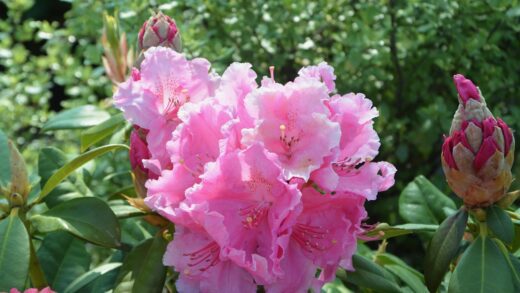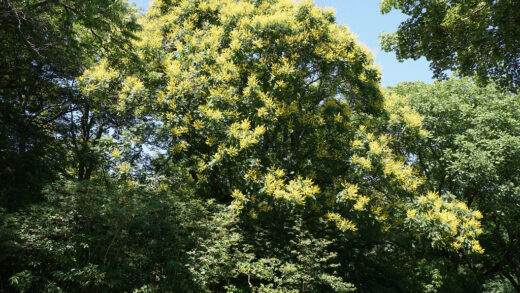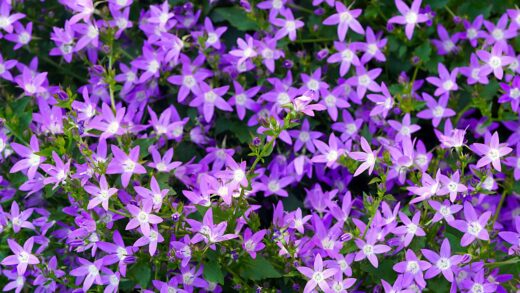The peach-leaved bellflower is a truly delightful and rewarding plant for any garden enthusiast, offering a classic cottage garden charm with its elegant, bell-shaped flowers. Understanding its fundamental needs is the first step towards cultivating a thriving display that will return year after year with increasing vigour. This plant, while relatively low-maintenance, responds exceptionally well to thoughtful care and attention to its preferred conditions, which closely mimic its native habitats in the meadows and woodland edges of Europe and Asia. Proper care involves a holistic approach, considering everything from the soil it is planted in to the amount of sunlight it receives and the moisture available to its roots throughout the growing season. By mastering these basics, you ensure not only the survival of your bellflowers but also a spectacular floral performance that will be the envy of the neighbourhood.
At the heart of successful cultivation lies the creation of an environment that caters to the plant’s natural inclinations. This means providing a foundation of well-drained soil, as the species is particularly intolerant of waterlogged conditions, which can lead to root rot and other fungal issues. It is a perennial that forms a basal rosette of leaves, from which tall, slender stems emerge, bearing the characteristic blooms. Paying close attention to the plant’s lifecycle, from its emergence in spring to its dormancy in winter, allows for timely interventions that support its health. This includes providing adequate water during dry spells, offering nutritional support when needed, and protecting it from common garden adversaries.
The beauty of the peach-leaved bellflower is that it is not overly demanding, making it an excellent choice for both novice and experienced gardeners. It has a natural resilience and an ability to adapt to a range of conditions, although it will always perform best when its primary requirements are met. The key is observation; your plants will often signal their needs through changes in their foliage or flowering habit. A proactive approach, where potential issues are addressed before they become significant problems, will always yield the best results and ensure a long and floriferous life for these charming perennials.
Ultimately, caring for this bellflower is a process of partnership between the gardener and the plant. It’s about providing the right framework of conditions and then allowing the plant’s natural vitality to shine through. The reward for this diligence is a stunning vertical accent in the garden border, with spires of blue, violet, or white flowers that attract pollinators and add a sense of grace and movement. With a solid understanding of its needs, you can easily integrate this versatile and beautiful plant into your garden design, enjoying its timeless appeal for many seasons to come.
Soil and site selection
Choosing the right location and preparing the soil is arguably the most critical factor in the long-term health and success of your peach-leaved bellflower. These plants thrive in a position that receives full sun to partial shade, with a preference for some protection from the intense heat of the afternoon sun, especially in warmer climates. An ideal spot might be at the edge of a woodland area or in a border that gets dappled light for part of the day, replicating its natural environment. Good air circulation is also crucial, as it helps to prevent the development of fungal diseases like powdery mildew, to which bellflowers can sometimes be susceptible.
More articles on this topic
The soil itself should be moderately fertile and, most importantly, exceptionally well-drained. Campanula persicifolia has a strong aversion to ‘wet feet’, and sodden soil, particularly during the winter months, is a primary cause of failure. If you have heavy clay soil, it is essential to amend it generously with organic matter such as compost, leaf mould, or well-rotted manure, as well as horticultural grit or sand to improve its structure and drainage. This creates a loamier texture that retains adequate moisture without becoming waterlogged, allowing the roots to breathe and establish themselves effectively.
The ideal soil pH for these bellflowers is neutral to slightly alkaline, typically ranging from 6.0 to 8.0. If your soil is naturally acidic, incorporating garden lime can help to raise the pH to a more suitable level. Before planting, it is always a good practice to dig the soil over thoroughly, removing any weeds, rocks, or other debris. This initial preparation creates a welcoming environment for the young plant’s roots to spread out and anchor themselves firmly, which is vital for its establishment and future growth.
When considering companion plants, choose species with similar requirements for sun and soil. Good partners might include hardy geraniums, lady’s mantle (Alchemilla mollis), or catmint (Nepeta), which complement the upright habit of the bellflower while sharing a preference for well-drained conditions. Thoughtful site selection and meticulous soil preparation are investments that will pay dividends in the form of robust, healthy plants that produce an abundance of beautiful flowers year after year.
Watering and moisture management
Proper watering is key to maintaining the health and vigour of the peach-leaved bellflower, which prefers consistently moist but not saturated soil. The goal is to mimic the moisture levels of a woodland edge, where the soil is cool and retains moisture but excess water drains away freely. During the first growing season after planting, it is especially important to provide regular water, typically about one inch per week, to help the plant establish a deep and extensive root system. This initial period is critical for its long-term resilience and drought tolerance.
More articles on this topic
Once established, the peach-leaved bellflower is reasonably drought-tolerant, but it will perform best with consistent moisture, particularly during prolonged dry spells or periods of high heat in the summer. It is always better to water deeply and less frequently rather than shallowly and often. Deep watering encourages the roots to grow further down into the soil where moisture is more readily available, making the plant more self-sufficient. Allow the top inch or two of soil to dry out between waterings to prevent the risk of root rot.
The best time to water is in the morning, which allows any moisture on the foliage to evaporate quickly in the sun, reducing the likelihood of fungal diseases taking hold. Watering at the base of the plant, directly onto the soil, is much more effective and efficient than using an overhead sprinkler, which can waste water and promote leaf spot issues. A soaker hose or drip irrigation system can be an excellent method for delivering water directly to the root zone where it is needed most.
During the winter, watering should be significantly reduced. The plants are dormant, and the cool, damp conditions mean that the soil retains moisture for much longer. In most climates with regular winter precipitation, supplemental watering is unnecessary. Overwatering during dormancy is a common mistake and a surefire way to cause the roots to rot. Always check the soil moisture before watering, even during the growing season, as weather conditions can greatly influence the plant’s needs.
Feeding and fertilisation
The peach-leaved bellflower is not a particularly heavy feeder and generally performs well in moderately fertile soil without excessive fertilisation. Over-fertilising can lead to lush, weak, and floppy growth that is more susceptible to pests and diseases, and it can also reduce the number of flowers produced. A more restrained approach to feeding is often the most effective strategy for promoting strong stems and a profusion of blooms. If your soil is healthy and rich in organic matter, you may find that little to no supplemental feeding is required.
The best way to provide nutrients is to amend the soil with a generous layer of compost or well-rotted manure at the time of planting. This improves the soil structure and provides a slow, steady release of nutrients throughout the growing season. Following this initial preparation, an annual top-dressing of compost applied in the spring as new growth emerges is typically sufficient to meet the plant’s nutritional needs for the entire year. This mulch also helps to conserve soil moisture and suppress weeds.
If your soil is particularly poor or your plants seem to lack vigour, a light application of a balanced, slow-release granular fertiliser can be beneficial in the early spring. Choose a fertiliser with an NPK ratio such as 10-10-10. It is crucial to follow the application rates on the product label to avoid over-feeding. Applying the fertiliser around the base of the plant and lightly working it into the soil surface, followed by a thorough watering, will help the nutrients to become available to the roots.
Avoid using high-nitrogen fertilisers, as these will encourage a surplus of leafy growth at the expense of flowers. The goal is to support the plant’s overall health and flowering potential, not to force rapid, soft growth. Observe your plants; their appearance is the best indicator of their needs. Healthy green foliage and steady growth are signs that your feeding regimen is appropriate. Yellowing leaves or stunted growth may indicate a nutrient deficiency, but always rule out other potential causes like improper watering or soil pH before adding more fertiliser.
General maintenance and deadheading
Ongoing maintenance for the peach-leaved bellflower is relatively straightforward but crucial for keeping the plants looking their best and encouraging a long flowering season. One of the most important tasks is deadheading, which is the process of removing spent flowers. Regularly removing the faded blooms prevents the plant from expending energy on seed production and instead redirects that energy into producing more flowers. This simple practice can significantly extend the blooming period, often encouraging a second, albeit smaller, flush of flowers later in the summer.
To deadhead effectively, you can either pinch off the individual spent flowers or, for a tidier appearance, cut back the entire flower stalk to the basal foliage once all the blooms on it have faded. This not only promotes reblooming but also keeps the plant looking neat and prevents unwanted self-seeding. While some self-seeding can be desirable for naturalising the plant in an informal garden setting, in more formal borders it can lead to overcrowding and the need for frequent thinning.
Taller varieties of Campanula persicifolia, especially those grown in richer soils or more exposed, windy sites, may require staking to prevent their elegant flower stems from bending or breaking. It is best to put supports in place in the spring, before the plants have reached their full height. Using materials like brushwood, bamboo canes, or commercial plant supports allows the foliage to grow up and through them, effectively hiding the structure and providing a natural-looking support system.
In the autumn, after the first hard frost, the foliage will begin to die back. At this point, you can cut the dead stems and leaves back to the basal rosette, which often remains semi-evergreen through the winter. This cleanup helps to improve air circulation around the crown of the plant and reduces the chances of pests and diseases overwintering in the debris. A light mulch applied around the plant after the ground has frozen can also offer some winter protection, especially in colder climates.
Division and rejuvenation
Division is an important maintenance task that helps to rejuvenate older, congested clumps of peach-leaved bellflower, ensuring their continued vigour and flowering performance. Over time, typically every three to four years, the centre of the clump can become woody and less productive, resulting in fewer flowers and a less attractive plant. Dividing the clump not only revitalises the original plant but also provides you with new plants to expand your collection or share with fellow gardeners.
The best time to divide Campanula persicifolia is either in the spring, just as new growth is emerging, or in the early autumn, at least four to six weeks before the ground freezes. Dividing in the autumn gives the new divisions ample time to establish their roots before winter sets in. To begin, carefully lift the entire clump out of the ground using a garden fork, taking care to preserve as much of the root ball as possible. It is often easiest to do this after a light rain when the soil is moist.
Once the clump is lifted, gently shake off any excess soil so you can clearly see the root structure and the individual crowns. Using a sharp spade, a garden knife, or two forks inserted back-to-back, divide the clump into several smaller sections. Each new division should have a healthy portion of roots and at least one or two growing points or shoots. Discard the old, woody central part of the clump, as it is the least vigorous, and retain the healthier, younger sections from the outer edges.
Replant the new divisions immediately at the same depth they were previously growing, either in a new location or back in the original, amended bed. Water them in thoroughly to settle the soil around the roots and eliminate any air pockets. Keep the newly divided plants well-watered for the first few weeks as they establish themselves. Division is a simple yet highly effective technique for maintaining the health of your bellflowers and ensuring a beautiful display for years to come.

















